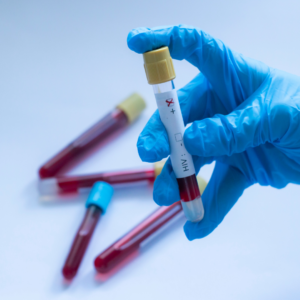
HIV Testing Myths Debunked: Get The Scoop From Our Testing Center Staff
March 28, 2025
PrEP Consultation vs. HIV Testing: What’s the Difference?
April 29, 2025What is the window period for an HIV test? Great question! The window period for an HIV test is the time between potential exposure to the virus and when a test can detect HIV in the body.
During this period, someone may be infected with HIV, but the virus might not be detectable yet. Understanding the window period is crucial for anyone considering HIV testing after a possible exposure.
Here, we’ll break down the window period and explain the different types of HIV tests to help you make informed decisions about testing.
What Is The Window Period For An HIV Test?
The HIV test window period is the time following HIV exposure before a test can accurately detect the virus. This timeframe is usually measured in days or weeks and varies depending on the type of test used and how the body responds to the infection.
Even if someone is infected with HIV during the window period, their body may not have produced enough antibodies or viral material to be detectable by the test. This is why testing at the right time is crucial to ensure accurate results after potential exposure.
How Long Is the Window Period?
The window period varies based on the test type. Here’s a breakdown of how long it usually takes for the body to show detectable levels of the virus or antibodies in different types of HIV tests:
Antibody Tests
- Window Period: 23 to 90 days
- How It Works: Antibody tests detect the body’s immune response to HIV. It looks for antibodies that develop as a response to infection. Most people will have detectable antibodies within 3 to 4 weeks, but it may take longer in some cases.
- Types of Tests: Rapid tests, home test kits, and laboratory-based tests.
Combination or Fourth-Generation Tests
- Window Period: 18 to 45 days, with the median window being 18 days
- How It Works: Combination tests, or fourth-generation tests, detect both HIV antibodies and HIV antigens (specific proteins found in the virus). These tests can detect the virus earlier than antibody-only tests because they detect antigens before antibodies are developed.
- Types of Tests: These are commonly used in clinical settings for a more accurate and earlier diagnosis.
Nucleic Acid Tests (NAT)
- Window Period: 10 to 33 days after exposure per the CDC
- How It Works: NATs detect the viral load in the blood sample taken from a vein rather than the immune system’s response. These tests can detect HIV much sooner after exposure, typically within 10 to 33 days. NATs are the most accurate and generally are used when someone has had a high-risk exposure or if they show symptoms of HIV.
- Types of Tests: These are usually done in a healthcare facility or laboratory.
Why is the Window Period Important?
Understanding the window period is critical for getting an accurate result. If you test too soon, you may receive a false negative (nonreactive) result, which can be misleading. This is because the test may not detect the virus or antibodies yet. A person may still be infected but appear HIV-negative.
If you think you have been exposed to HIV, it’s essential to wait until after the window period to get retested. Your healthcare provider will likely recommend retesting after a few weeks to ensure you have an accurate result.
How to Choose the Right HIV Test
When choosing an HIV test, it’s crucial to consider your potential exposure, your health status, and how quickly you need the results. Here are some considerations to help you choose the proper test for your situation:
- Antibody tests are typically rapid tests we perform when a patient wants results quickly.
- Combination tests are ideal if you’re looking for a faster and more accurate result than an antibody test, typically two weeks to 45 days after exposure.
- Nucleic acid tests should be considered if you’ve had a high-risk exposure and want to know as soon as possible or if you have symptoms of acute HIV infection.
What Is The Window Period For An HIV Test? We Can Help!
If you believe you may have been exposed to HIV, it is essential to speak with your healthcare provider immediately to explore your options. While the initial test may not provide an accurate result due to the window period, it is important to stay in communication with your provider and schedule follow-up testing. Regular visits and ongoing monitoring will ensure the most accurate results and appropriate care.
Contact us today if you’re concerned about potential HIV exposure or would like to get tested. The Harmony Healthcare team is here to help guide you through the process and answer any questions. And check out what we’re doing for National HIV Testing Day this year!





